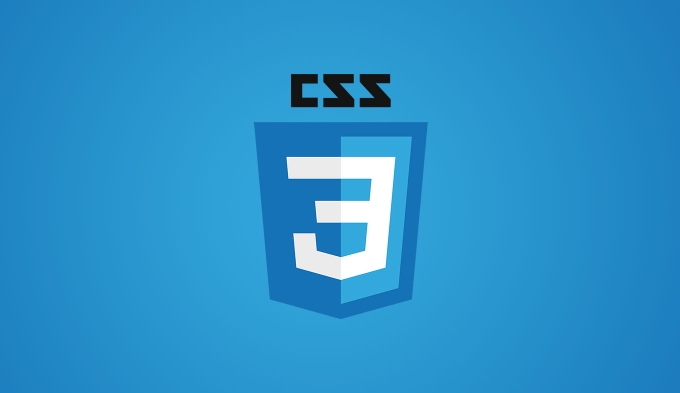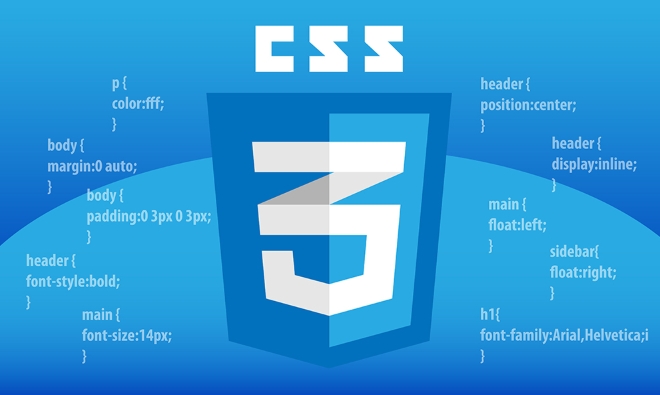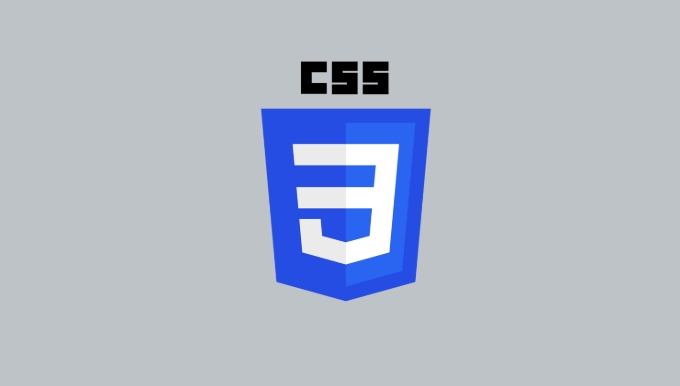The basic shadow makes the text more prominent on the background through horizontal and vertical offsets and blur values; 2. The outer luminous uses multiple layers of white and colored blurred shadows to achieve halo effect, which is suitable for technological design; 3. The depression effect uses the lower right highlight and the upper left shadow to simulate the relief feeling, so that the text seems to be embedded in the background; 4. The neon effect creates luminous text through multiple layers of strong blurred color shadows in the same direction, which is often used in the cyberpunk style; 5. The long projection uses multiple incremental offset blur-free shadows to form oblique long shadows to enhance the three-dimensionality of the text; multiple layers of shadows need to be separated by commas, and the blur and number of layers are reasonably controlled to avoid performance problems. These techniques can be flexibly combined to achieve rich visual effects.

text-shadow property of CSS can add shadow effects to text, which is often used to improve the readability of text, create visual hierarchy, or implement special design styles. Below are some practical and common text-shadow examples suitable for use in different scenarios.

1. Basic Shadow Effect (Single Shadow)
The simplest text shadow makes the text more prominent in the background.
.text-basic {
text-shadow: 2px 2px 4px rgba(0, 0, 0, 0.5);
font-size: 24px;
}-
2px: Horizontal offset (to the right) -
2px: Vertical offset (downward) -
4px: fuzzy radius (larger the more blurred) -
rgba(0,0,0,0.5): Shadow color (transparent black)
Suitable for light text on dark backgrounds.

2. External glow effect (soft halo)
Create a luminous feeling through blur values, often used in title or neon style designs.
.text-glow {
text-shadow: 0 0 10px #fff, 0 0 20px #fff, 0 0 30px #00f;
color: #00f;
font-size: 36px;
}- Use multi-layer shadow overlay (separated by commas)
- The first layer: small white halo
- The second layer: wider white halo
- The third layer: blue outer ring, enhances neon feeling
Design suitable for technological and futuristic style.

3. Inset shadow simulation
Although text-shadow does not have an inset, it can simulate the "embedded" sense through direction control.
.text-emboss {
color: #aaa;
text-shadow: 1px 1px 1px #fff, -1px -1px 1px #000;
font-size: 32px;
}- White shadow on the bottom right: simulate highlights
- Black Shadow on the top left: Simulated Shadow
- Visually like text "pressing" into the background
Commonly used in button and relief style titles.
4. Neon light effect (strong dynamic feeling)
Combining colors and blurs to create luminous text similar to neon tubes.
.text-neon {
color: #ffff;
text-shadow:
0 0 5px #fff,
0 0 10px #ff00de,
0 0 20px #ff00de,
0 0 30px #ff00de;
font-size: 40px;
font-weight: bold;
}- Multi-layer pink and purple blurry stack
- The background is recommended to use dark colors (such as black or dark blue)
- Can achieve flickering effect with
animation
Suitable for nightclub style and cyberpunk theme websites.
5. Long projection (long shadow obliquely)
Popular in flat design, giving the text a "stand-standing feeling".
.text-long-shadow {
color: #333;
text-shadow:
1px 1px 0 #ccc,
2px 2px 0 #ccc,
3px 3px 0 #ccc,
/* ... Write until about 10px*/
10px 10px 0 #ccc;
font-size: 36px;
}Or it is more convenient to generate using JavaScript, but you can also see the effect by writing a few layers manually.
Note: This effect is more obvious on light backgrounds. It is recommended to use a gray that is a little darker than the background.
Summarize tips
- Multi-layer shadows : Use commas to separate multiple shadow values to achieve complex effects
- Blur value is 0 : can make clear projections or border feels
- Negative offset : Let the shadow go left or up
- Transparent color :
rgba(0,0,0,0)can occupy place but not visible (use less) - Performance Note : Excessive blurring or too many layers may affect rendering performance
Basically these common uses. text-shadow seems simple, but it can produce many amazing effects with creativity. The key is to try different combinations.
The above is the detailed content of css text shadow examples. For more information, please follow other related articles on the PHP Chinese website!

Hot AI Tools

Undress AI Tool
Undress images for free

Undresser.AI Undress
AI-powered app for creating realistic nude photos

AI Clothes Remover
Online AI tool for removing clothes from photos.

Clothoff.io
AI clothes remover

Video Face Swap
Swap faces in any video effortlessly with our completely free AI face swap tool!

Hot Article

Hot Tools

Notepad++7.3.1
Easy-to-use and free code editor

SublimeText3 Chinese version
Chinese version, very easy to use

Zend Studio 13.0.1
Powerful PHP integrated development environment

Dreamweaver CS6
Visual web development tools

SublimeText3 Mac version
God-level code editing software (SublimeText3)

Hot Topics
 What is Autoprefixer and how does it work?
Jul 02, 2025 am 01:15 AM
What is Autoprefixer and how does it work?
Jul 02, 2025 am 01:15 AM
Autoprefixer is a tool that automatically adds vendor prefixes to CSS attributes based on the target browser scope. 1. It solves the problem of manually maintaining prefixes with errors; 2. Work through the PostCSS plug-in form, parse CSS, analyze attributes that need to be prefixed, and generate code according to configuration; 3. The usage steps include installing plug-ins, setting browserslist, and enabling them in the build process; 4. Notes include not manually adding prefixes, keeping configuration updates, prefixes not all attributes, and it is recommended to use them with the preprocessor.
 CSS tutorial for creating a sticky header or footer
Jul 02, 2025 am 01:04 AM
CSS tutorial for creating a sticky header or footer
Jul 02, 2025 am 01:04 AM
TocreatestickyheadersandfooterswithCSS,useposition:stickyforheaderswithtopvalueandz-index,ensuringparentcontainersdon’trestrictit.1.Forstickyheaders:setposition:sticky,top:0,z-index,andbackgroundcolor.2.Forstickyfooters,betteruseposition:fixedwithbot
 CSS tutorial for creating loading spinners and animations
Jul 07, 2025 am 12:07 AM
CSS tutorial for creating loading spinners and animations
Jul 07, 2025 am 12:07 AM
There are three ways to create a CSS loading rotator: 1. Use the basic rotator of borders to achieve simple animation through HTML and CSS; 2. Use a custom rotator of multiple points to achieve the jump effect through different delay times; 3. Add a rotator in the button and switch classes through JavaScript to display the loading status. Each approach emphasizes the importance of design details such as color, size, accessibility and performance optimization to enhance the user experience.
 CSS tutorial focusing on mobile-first design
Jul 02, 2025 am 12:52 AM
CSS tutorial focusing on mobile-first design
Jul 02, 2025 am 12:52 AM
Mobile-firstCSSdesignrequiressettingtheviewportmetatag,usingrelativeunits,stylingfromsmallscreensup,optimizingtypographyandtouchtargets.First,addtocontrolscaling.Second,use%,em,orreminsteadofpixelsforflexiblelayouts.Third,writebasestylesformobile,the
 How to create an intrinsically responsive grid layout?
Jul 02, 2025 am 01:19 AM
How to create an intrinsically responsive grid layout?
Jul 02, 2025 am 01:19 AM
To create an intrinsic responsive grid layout, the core method is to use CSSGrid's repeat(auto-fit,minmax()) mode; 1. Set grid-template-columns:repeat(auto-fit,minmax(200px,1fr)) to let the browser automatically adjust the number of columns and limit the minimum and maximum widths of each column; 2. Use gap to control grid spacing; 3. The container should be set to relative units such as width:100%, and use box-sizing:border-box to avoid width calculation errors and center them with margin:auto; 4. Optionally set the row height and content alignment to improve visual consistency, such as row
 How to center an entire grid within the viewport?
Jul 02, 2025 am 12:53 AM
How to center an entire grid within the viewport?
Jul 02, 2025 am 12:53 AM
To make the entire grid layout centered in the viewport, it can be achieved by the following methods: 1. Use margin:0auto to achieve horizontal centering, and the container needs to be set to set the fixed width, which is suitable for fixed layout; 2. Use Flexbox to set the justify-content and align-items properties in the outer container, and combine min-height:100vh to achieve vertical and horizontal centering, which is suitable for full-screen display scenarios; 3. Use CSSGrid's place-items property to quickly center on the parent container, which is simple and has good support from modern browsers, and at the same time, it is necessary to ensure that the parent container has sufficient height. Each method has applicable scenarios and restrictions, just choose the appropriate solution according to actual needs.
 What is feature detection in CSS using @supports?
Jul 02, 2025 am 01:14 AM
What is feature detection in CSS using @supports?
Jul 02, 2025 am 01:14 AM
FeaturedetectioninCSSusing@supportschecksifabrowsersupportsaspecificfeaturebeforeapplyingrelatedstyles.1.ItusesconditionalCSSblocksbasedonproperty-valuepairs,suchas@supports(display:grid).2.Thismethodensuresfuturecompatibilityandavoidsrelianceonunrel
 Addressing CSS Browser Compatibility issues and prefixes
Jul 07, 2025 am 01:44 AM
Addressing CSS Browser Compatibility issues and prefixes
Jul 07, 2025 am 01:44 AM
To deal with CSS browser compatibility and prefix issues, you need to understand the differences in browser support and use vendor prefixes reasonably. 1. Understand common problems such as Flexbox and Grid support, position:sticky invalid, and animation performance is different; 2. Check CanIuse confirmation feature support status; 3. Correctly use -webkit-, -moz-, -ms-, -o- and other manufacturer prefixes; 4. It is recommended to use Autoprefixer to automatically add prefixes; 5. Install PostCSS and configure browserslist to specify the target browser; 6. Automatically handle compatibility during construction; 7. Modernizr detection features can be used for old projects; 8. No need to pursue consistency of all browsers,






